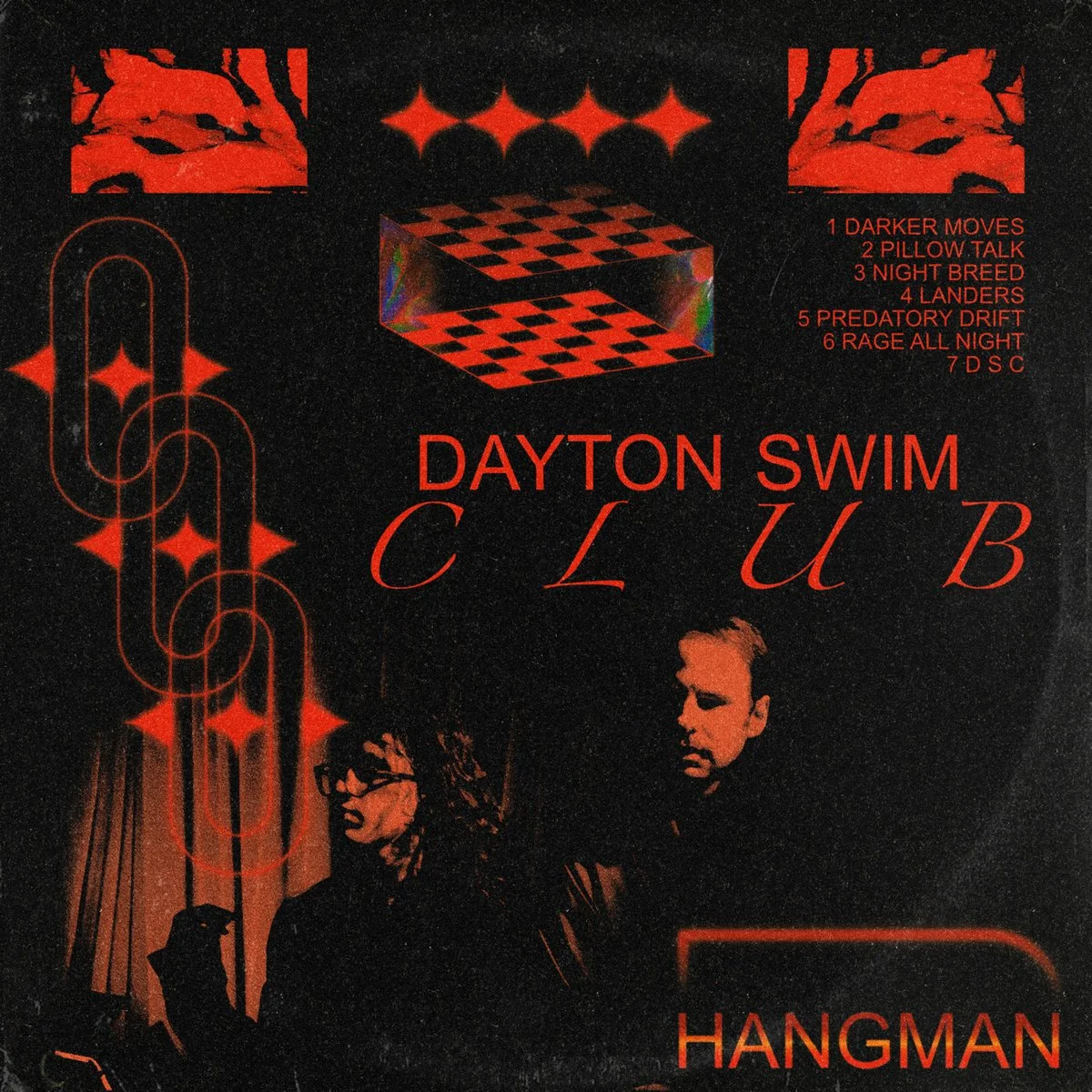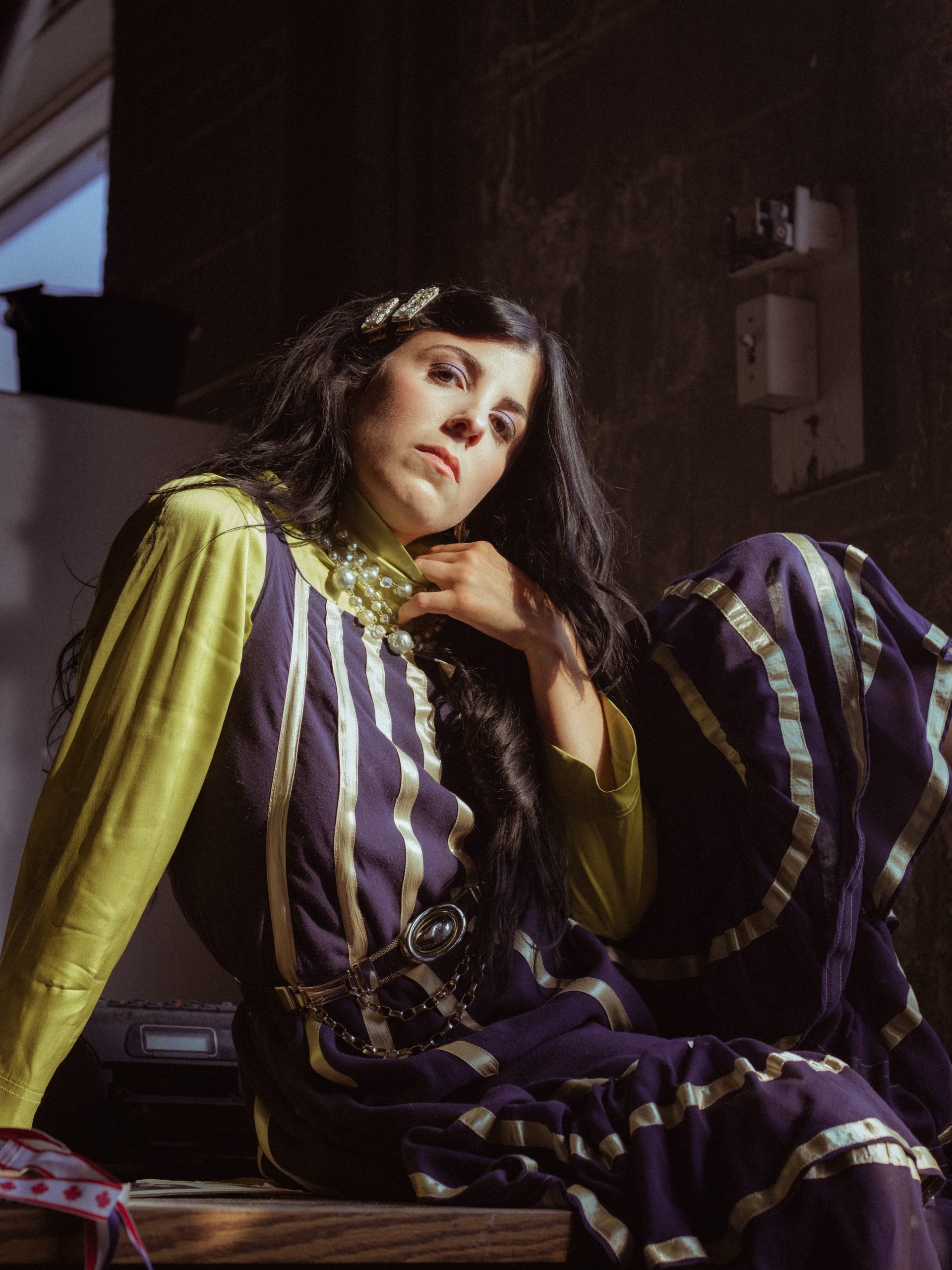It Took Reno Cruz A Lot of Retrospection to Make "Falling In Love Is Not That Hard"
Reno Cruz. Photo courtesy of Sam Fuehring
In Reno Cruz’s debut album, Falling In Love Is Not That Hard, he draws on an essential truth that we have likely all grasped at some point during the pandemic: isolation and togetherness are not mutually exclusive, and it is easy to feel alone while in the presence of loved ones.
But unlike most, the Chicago-based folk artist didn’t learn about the fusion of these conflicting feelings in the midst of COVID-19. His upcoming project consists of countless years of retrospection, taking listeners back to the time when he first moved to Chicago in 2017.
“I ended up here in a kind of roundabout way,” Cruz tells me over Zoom. “I was acting in a film that was shooting in Wisconsin, but then staying in Chicago on my off-days.” Originally from Los Angeles, Cruz initially came to the Midwest for acting school in his late teenage years. “I was like a little nerdy 19 year-old coming into Chicago on the weekends, and trying to find any cool culture that I could,” he says.
Although Cruz felt happy with the energy that he put into the film, he had a quick change of heart and decided to brace the music industry head-on. “I suddenly realized that this was not what I cared about,” Cruz says. “I really wanted to be a songwriter, but I wasn’t writing songs. The experience of moving to Chicago—and the many things that I discovered about myself between 2017 and 2019—were what really shaped the record.”
Reno Cruz. Photo courtesy of Jacob King
Cruz wants to make it clear that while Falling In Love Is Not That Hard focuses on relationships, “...it’s really about anxiety, and the narrative that we tell ourselves in relationship to other people.” He tells me that the man pouring out his soul in many of the songs off of Falling In Love Is Not That Hard is not the same Reno Cruz that I’m interviewing through video chat, but instead represents a different version of himself. “It’s the version of me that I was in January of 2019. Fucking heartbroken, lying on the floor and thinking, ‘Oh God, what is this!?’” He mentions how contradictory his emotions were at this moment of his life; although he was depressed from trying to recover from a breakup, he was also excited to be living in a new city, taking on the music industry and making cool and talented friends with each passing day.
Cruz shares with me that the word he came across which helped him to conceptualize these feelings was ‘ambivalence’ – meaning two strong opposing emotions being felt at the same time. “That’s not my experience with any particular relationship, that’s my experience of life,” he says.
“Life is not simple; relationships are not simple. We live in an extremely complex, ever-changing world that brings up all kinds of feelings all the time. When it comes to feeling isolation and togetherness at the same time … You can feel that way in a romantic relationship, you can feel that way when you’re out at the bar with your friends, and you can feel intensely connected to people when you’re all alone in your bedroom.”
Before leaving his home in California to pursue acting and songwriting, Cruz had already worked many odd jobs. This includes stints as a jewelry salesman, banjo boy, and even a cheesemonger (which he still does to this day). “I’ve had a weird life, and I’ve certainly sought that out,” Cruz informs me. “But when you seek something out enough, it also finds its way to you. Mostly I’ve just been saying ‘yes’ to whatever I have been offered … I’ve said yes to a lot of weird shit, and it’s definitely enriched my life.”
Because Cruz has had to operate in a lot of different contexts, he feels conviction in his ability to relate and empathize with a broad array of humans across the world. “I’ve been in acting, but I would also consider many of my experiences in customer service as acting, as well. It’s an emotional labour, if you have to speak to someone who is being rude and unreasonable to you. And it’s a skill that I don’t believe people who haven’t worked in that field often think about.”
Reflecting on these experiences, Cruz explains how this kind of emotional labour has impacted his life as a songwriter as well. “In the song ‘Everybody,’ I sing about how ‘everybody wants to be my baby,’ and ‘everybody needs a piece of me.’ In many ways, it’s about me feeling like I’m doing customer service in my regular life.”
Reno Cruz. Photo courtesy of Sam Fuehring
For musicians looking to release their debut works into the world, Reno Cruz offers two pieces of advice based on his own experiences: be honest with yourself, and take your time. “Moving towards music wasn’t my plan … it was just, like, ‘I need to do this,’” Cruz reflects. “But it took a long time, because I was too locked up emotionally to become a songwriter. I learned how to play guitar, and I played music with other people for years and years and years before I got to a place where I was writing songs that I felt I could actually play in front of other people … you don’t have to be honest to write a song, but you have to be honest to write a good song.”
Cruz also emphasizes that “... [i]f you haven’t lived any life, then you can’t write a song,” and I am forced to think about all his odd jobs, heartbreaks, and the adventures that came to him upon moving from place-to-place. He believes in random bursts of creativity, but he also believes in the power of sitting down to refine his musical creations.
According to Cruz, these two methods live in symbiosis – you simply cannot have one without the other. “Sometimes it comes out all at once, and you’re literally looking at where you are, and what’s going on, and trying to get it as clearly and concisely onto the paper as you can. But sometimes you need to take a long time and just let it sit. We tend to romanticize that burst of creativity, but sometimes that’s not the best way to say it. You have to go back and be honest with yourself, edit, and show people how it’s working. It’s a balance of that super potent in-the-moment feeling, and later on, that healthy detachment from that emotion in order to make it as clear as possible.”
Listeners who enjoy Falling In Love Is Not That Hard can expect more Reno Cruz projects in the future, although they might be somewhat different from his debut release. He is currently finishing off an EP which serves as a follow-up to Falling In Love Is Not That Hard. This upcoming project explores some of the same themes, but with an expanded musical palette; more complex harmonies, additional instrumentation, and even a rap feature.
“I don’t know if I’m a folk artist, even though I love acoustic guitar and folk has had a huge impact on my life. But I had to make Falling In Love Is Not That Hard because of who I was at a certain time in my life. I’m really excited to put it out and move past it, because even though I love this record, I know that there is more to the story.”
Falling In Love Is Not That Hard
Released January 21st, 2022
F.I.L.I.N.T.H.
Wild Geese
Love Is A Wave
Around U
Everybody Wants
Your Love
The Problem
Heart Is A Window
Barnacles!
I'd Do It All Again
Love Is A Wave (Demo)
All tracks produced by Reno Cruz
Track 9 co-produced by Hunter Davidson
Mixed and mastered by Brok Mende at Friends of Friends Recording
Vocals on Tracks 1, 4, 5, 9, and 10 by Hannah Maverick-Cruz
Vocals on Tracks 6 and 10 by Danielle Strautmanis
Vocals on Tracks 9 and 10 by Wyatt Waddell
Vocals on Track 9 by Ariella Granados & Izzy Ortiz
Drums on Tracks 1, 7 and 10 by Sam Subar
Bass clarinet on Track 1 by Jacob Slocum
Bass on Tracks 4, 6, 7 and ambience on Track 2 by Jake Hawrlyak
Violin on Track 5 by Noelle Viard
Tenor saxophone on Track 7 by Eric Novak
Tenor saxophone, clarinet, flute on Track 6 by Kenneth Leftridge
Drums on Track 6 by David Blair Jr.
Trombone and trumpet on Track 6 by Chris Misch
Flutes on Track 10 by José Guadalupe Flores
Reno Cruz
Instagram | Bandcamp | Spotify
YouTube | Apple Music | Twitter | Website
Spencer Nafekh is a tireless reader, writer, editor, and advocate for the written word. With an undergraduate degree in Concordia's English and Creative Writing program imminent, he plans to pursue a Master's specialization in journalism so that he can fully realize his career path. When Spencer is not working away, he is probably listening to experimental music while lost in the world of a science fiction novel.











































































